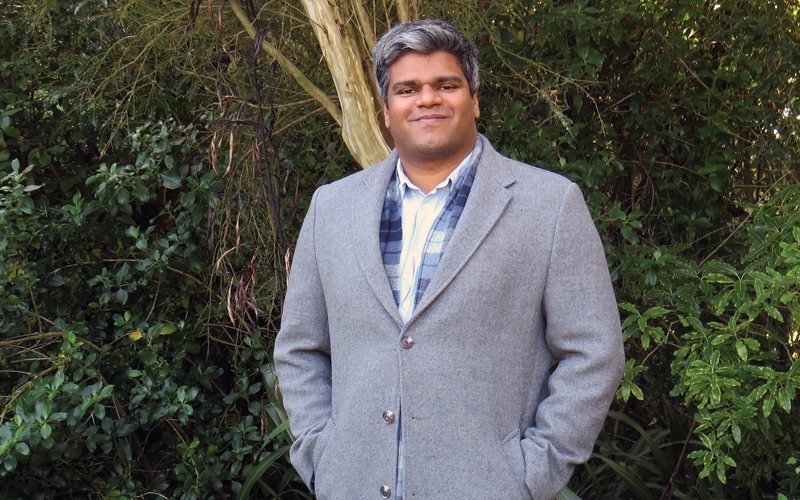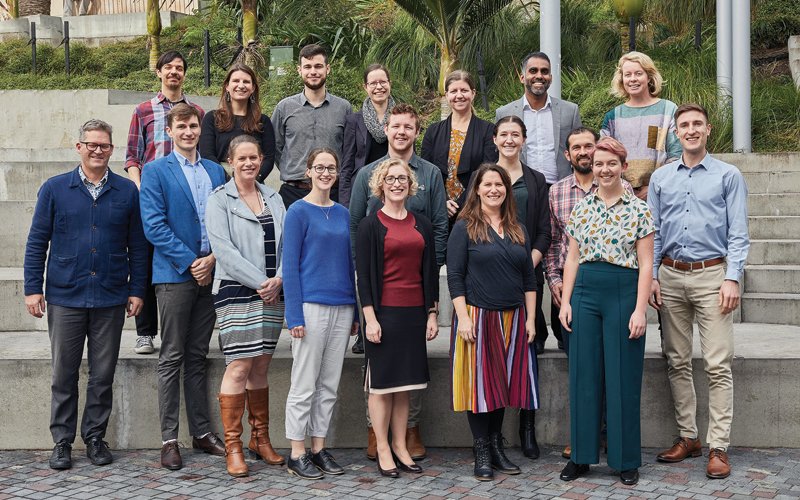31 May 2023
How Kiwi engineers can play a vital role in the drive to net zero carbon.
It’s not easy being green? In fact, it’s a cinch. Walk down any supermarket aisle and items that claim to be eco-friendly, carbon-neutral or zero-waste are legion. Take a flight and you can offset your carbon. Build a factory, offset your carbon. The question is, what’s the impact? Some of these things may move the dial, but there’s plenty of greenwashing out there. Meanwhile, New Zealand is signed up to net zero carbon by 2050, a target that will only be met through genuine and effective emissions-reduction initiatives.
So, what projects are underway here that have depth and value? What role are Kiwi engineers playing in the drive to net zero carbon? And, given that other major goal of building a more resilient Aotearoa, are initiatives to reduce emissions going to be a help or a hindrance?
First, the headline: New Zealand’s greenhouse gas emissions have been heading in the wrong direction, up by more than a quarter – or 17.2 million metric tonnes of carbon dioxide – in the three decades between 1990 and 2019, with cows and cars (that is, road transport) the main offenders. The Climate Change Commission’s 2021 warning was that we’re likely to fall millions of tonnes short of target. Among other things, it stressed the need to prioritise reducing gross emissions within our borders.
The Commission recently began consultation on draft advice for New Zealand’s second emissions reduction plan, which will cover the emissions budget from 2026 to 2030. Chairperson Dr Rod Carr describes what some key parts of the transition to a low-emissions Aotearoa looks like and what it will take, starting with the decarbonisation of energy production.

Dr Rod Carr says only 40 percent of all the energy used in New Zealand comes from renewable sources and we need to decarbonise the other 60 percent if we’re to achieve net zero carbon 2050 and beyond.
“Only 40 percent of all the energy used in New Zealand comes from renewable sources and we need to decarbonise the other 60 percent if we’re to achieve net zero 2050 and beyond,” says Rod.
How do we make inroads? For a start, by removing coal for generating electricity and process heating – alternatives are available. Also, by reducing our use of liquid fossil fuels for transport, which means accelerating the shift to electric vehicles (EVs), possibly introducing hydrogen for heavy transport, plus electrification of trains and near-shore marine.
“There are known technologies that aren’t yet deployed at scale in New Zealand,” Rod says, adding “this is going to require a significant and sustained multi-year investment in infrastructure.”
What else? The built environment will have to be reconfigured to enable and accommodate a low-emissions lifestyle (and mitigate the effects of a more turbulent climate), which will mean retrofitting buildings and neighbourhoods. In agriculture, the 20 percent of emissions that doesn’t involve biogenic methane – largely, nitrous oxide from fertiliser use and carbon dioxide from farm equipment and food processing – will have to be tackled.
“That’s about how we get lower emitting practices in the production of meat and milk protein, and in the processing of that protein for markets.”
In reducing emissions, we need to make sure we’re not creating other problems.
None of this requires a new mousetrap. But it does call for a slew of broad-based engineering skills such as mechanical, civil, structural, electrical, chemical, process and software engineering.
“It’s a decade for engineers,” says Rod, noting that our big challenge is sourcing those skills when the rest of the world is also chasing them.
As for resilience: “In reducing emissions, we need to make sure we’re not creating other problems. The classic case is that we’re relying heavily on a path to net zero that requires planting a lot of trees. But we can’t keep it there by planting trees forever. So how do you make sure your pathway is resilient?”
Capturing carbon
It wouldn’t hurt if we could find some new tools for capturing carbon. At the University of Canterbury, engineering researchers are investigating whether combining geothermal with bioenergy could produce a two-pronged benefit, supercharging the generation of renewable energy while also creating a carbon sink. The project arose from a problem: when geothermal is used to produce electricity, CO2 dissolved in the hot water coming from deep underground is released into the atmosphere. If you want to decarbonise the electricity sector, reducing geothermal emissions has to be part of the solution.
But engineering PhD student Karan Titus’s work goes further. In a process he has labelled Geothermal-BECCS (Bioenergy and Carbon Capture and Sequestration), forestry waste is burned to generate electricity, and the CO2 emissions are captured and injected underground using geothermal wells. Meanwhile, more electricity is generated than could be achieved by geothermal alone.

PhD student Karan Titus' research involves forestry waste being burned to generate electricity, with CO2 emissions captured and injected underground using geothermal wells.
Karan says a combined geothermal and bioenergy plant could potentially remove a million tonnes of CO2 a year.
“If we can capture the CO2 after we’re done making the electricity by dissolving it in geothermal fluid for reinjection, then we get a carbon negative process. And that gives us the ability to tackle climate change in those two ways.”
Karan says: “Carbon dioxide from all forms of biomass originates from the atmosphere. Upon combustion, this CO2 would normally be returned to the atmosphere and the process would be carbon neutral. Dissolving the CO2 instead in geothermal reinjection fluid would store it deep beneath the surface of the earth, where it will eventually mineralise into rocks. Thus, a direct line can be drawn from atmosphere to biomass to deep subsurface via geothermal-BECCS.”
University of Canterbury Civil and Natural Resources Engineering Senior Lecturer Dr David Dempsey, who is supervising Karan’s research, says the approach looks achievable technically. Crucially, it also looks promising on the economics.
“We have a limited budget to spend on decarbonisation, so you need to be looking at technologies that give you the biggest bang for your buck,” David says.
This is a first step for New Zealand into something called carbon dioxide removal.
“This one that Karan is working on is impressive. It could produce renewable energy to displace Huntly coal or Stratford natural gas, and at the same time you pull CO2 out of the atmosphere and put it underground.”
The next step is a pilot study, preferably in New Zealand. If that goes well, then the geothermal industry has shown itself to be quick to adopt new technologies.
“This is a first step for New Zealand into something called carbon dioxide removal,” says David.
“Remember the old forestry credits of the 1990s and 2000s that turned out to be somewhat bogus? It’s like that, but in this case it’s a proper, monitored system for taking out CO2 and incentivising those sorts of activities.”
It could be the real deal, an authentic solution. And those are sorely needed given the urgency of the climate crisis.
Measuring accountability
It’s something sustainable transport consultancy MRCagney has been grappling with – the importance of genuine accountability, of matching words with action. The firm recently achieved B Corp certification, an independent international standard that evaluates a company’s entire social and environmental impact. MRCagney was scrutinised for its performance, accountability and transparency on a raft of factors ranging from employee benefits to impact on the community.
Managing Director Jenson Varghese MEngNZ says MRCagney had always prided itself on being a values-oriented company. Undergoing B Corp certification was about testing that assumption, benchmarking against international best practice, and learning where they could lift their game.
“Also, we’re finding that our clients are increasingly looking at the social responsibility and environmental impact of the firms they engage. B Corp certification is a good way to articulate or prove that we actually care.”

Sustainable transport firm MRCagney recently achieved B Corp certification, an international standard that evaluates a company’s entire social and environmental impact. Photo: MRCagney
In terms of environmental impact, the firm came out well, says Jenson, although the certification process did identify areas for improvement, such as looking more closely at the sustainability practices of some of its suppliers. The process also fed into a wider examination by MRCagney of how it should mitigate its carbon footprint.
“We’re exploring that now: where can we invest to influence change at a greater scale than simply by offsetting our carbon emissions?” He adds that could involve planting trees, but it might be that investing in education to promote behavioural change is more fruitful.
Balancing conflicting demands
Time to circle back to the resilience question. Since the Canterbury earthquakes there’s been a sharp focus on seismic resilience. Meanwhile, however, the pressure is on to reduce the embodied carbon of new buildings. (With operational carbon declining, the need to tackle emissions associated with materials and construction becomes more urgent.) Is there a conflict there? Does the drive to improve seismic resilience pull us away from building lower carbon structures?
Dr Charlotte Toma MEngNZ of the University of Auckland’s Department of Civil and Environmental Engineering is researching whether the carbon cost of designing seismically resilient medium- to high-density buildings can be justified. Or to put it more positively: is there a sweet spot where the two demands are balanced?
The first phase, to be completed next year, has involved structural modelling analysis and redesign of a group of case study buildings from Christchurch and Wellington, looking for ways to increase resilience and reduce lifecycle embodied carbon.
Our professional influence is a thousand times greater than whatever we do in our personal lives. We have a responsibility to engage in these conversations.
That sweet spot isn’t yet clear. But, says Charlotte, it definitely won’t be about building everything with engineered timber – concrete is here to stay. Rather, the solution will require better understanding of the strengths and weaknesses of various materials, choosing materials with lower embodied carbon where possible, and optimising design to reduce carbon intensity. It may also mean designing buildings for longer lifecycles – the next phase of the team’s research.
“Part of it is about getting engineers involved earlier in the programme, working with the architect and client and imparting our knowledge on design decisions to influence the embodied carbon outcome,” says Charlotte, who believes engineers need to take on a greater role in sustainable design.
“Our professional influence is a thousand times greater than whatever we do in our personal lives. We have a responsibility to engage in these conversations.”
Reducing embodied carbon
The Ministry of Building, Innovation and Employment’s (MBIE) Building Performance team is focused on reducing the embodied carbon of buildings, says Katie Symons, Principal Advisor Engineering. Its Building for Climate Change programme looks at reducing emissions of the building sector, which involves reducing the embodied carbon of buildings – the emissions associated with extracting, manufacturing, transporting and disposing of building materials, and constructing buildings – and reducing the operational emissions of buildings (those attributed to the use of a building, such as the energy used to heat and operate it). Following consultation on the Whole-of-Life Embodied Carbon Reduction framework for new buildings, MBIE published a technical methodology for the assessment of embodied carbon of buildings. It is a high-level technical basis for proposed future regulations to reduce buildings’ embodied carbon emission, not a regulatory document.
“The primary objective of publishing this methodology is to establish a consistent method of assessing the embodied carbon emissions within our buildings and ultimately reducing these emissions.”
The programme’s vision is that by 2050, New Zealand’s building-related emissions are near zero, Katie says.
“For embodied emissions, this could be achieved by efficient design of new buildings, refurbishing or repurposing our existing buildings, being efficient with the construction products and materials we use in new buildings, and reducing the carbon associated with those products and materials.”





